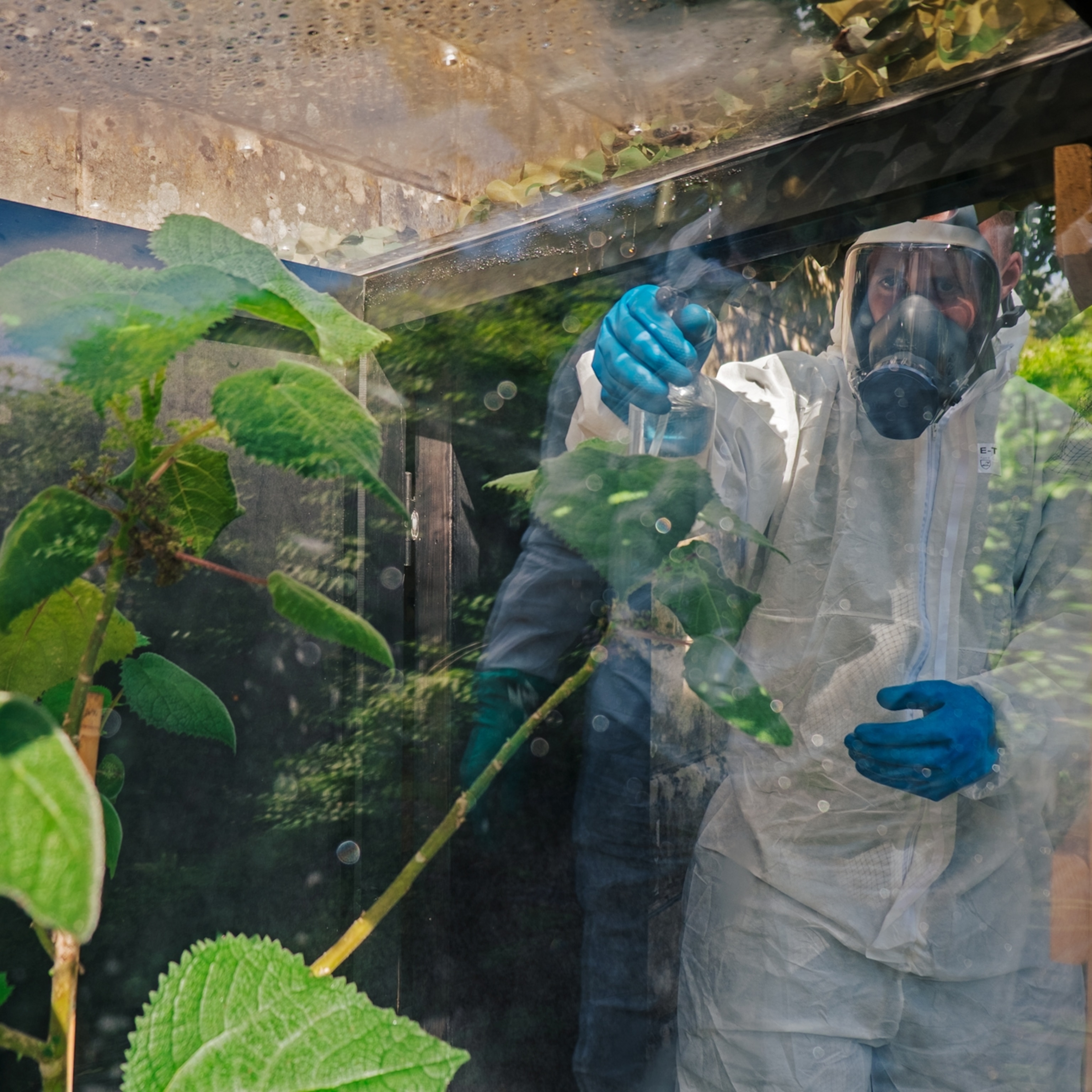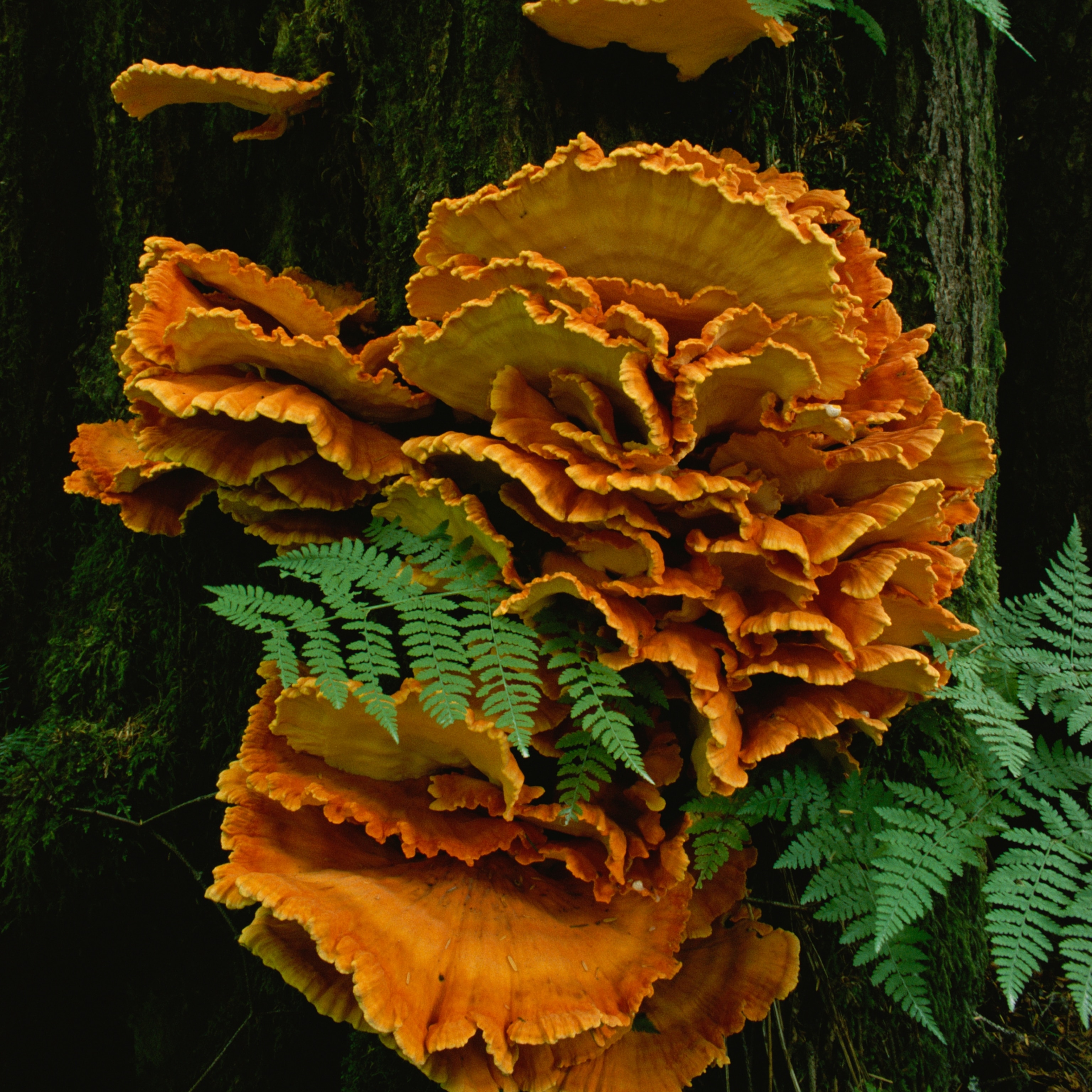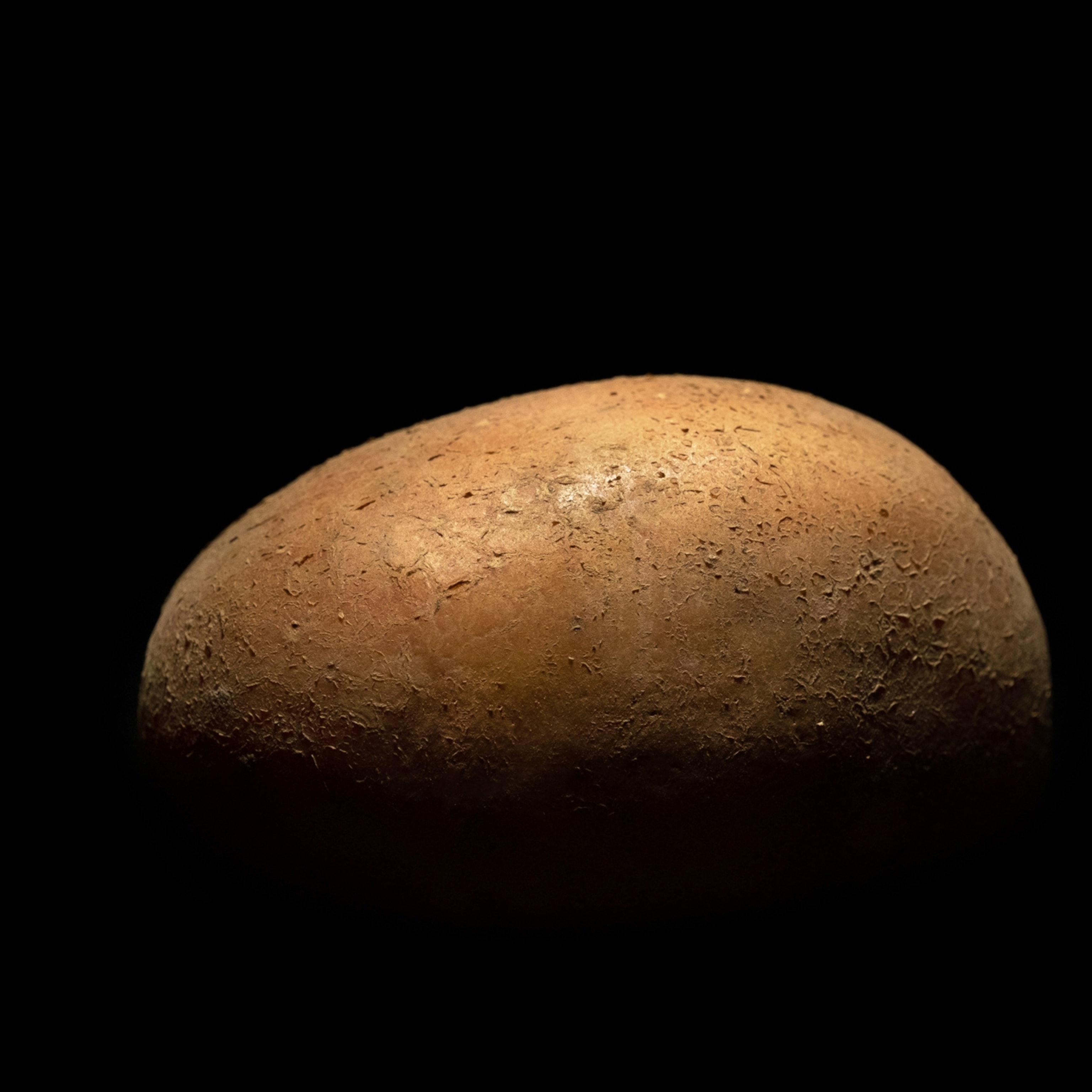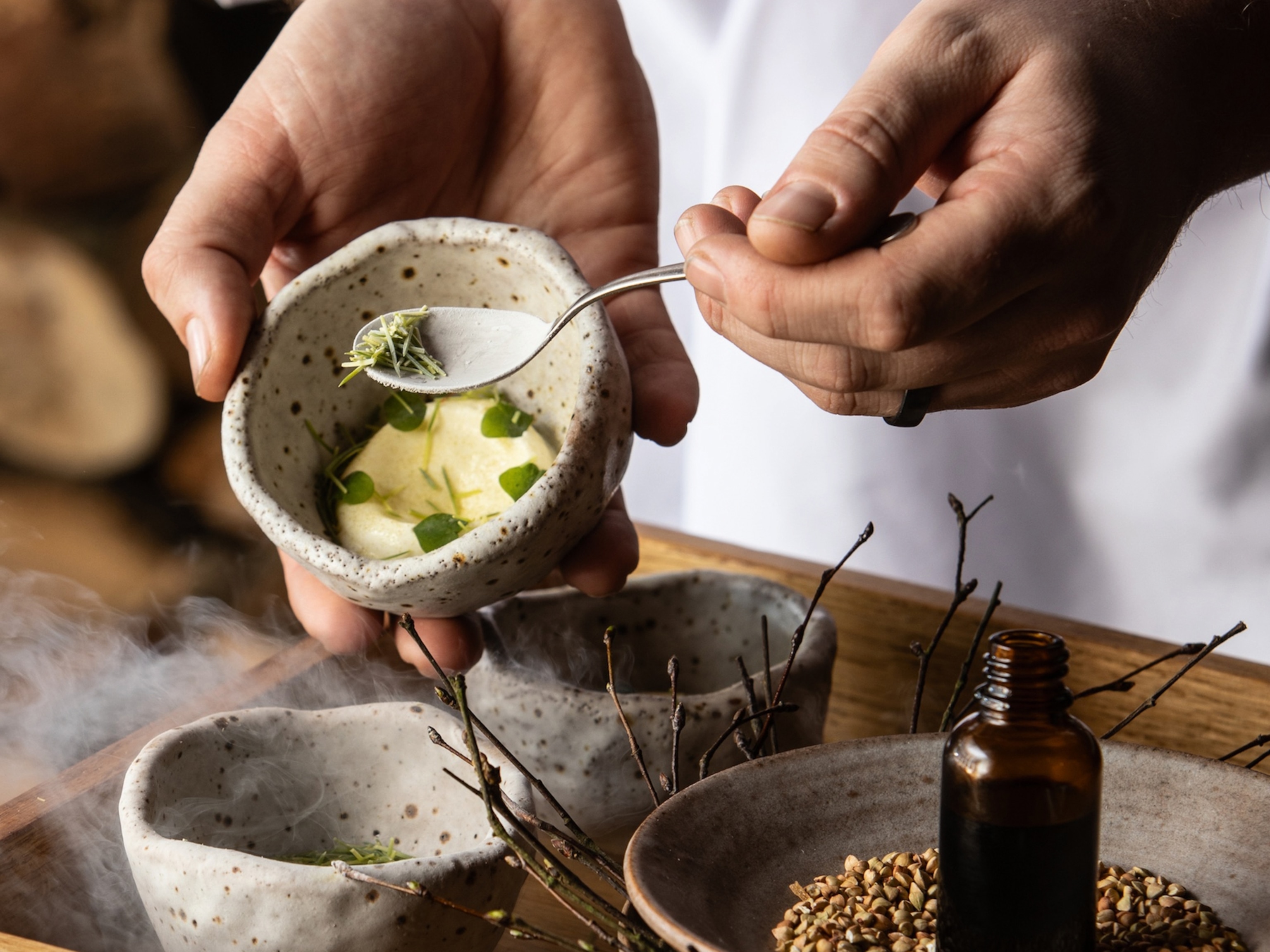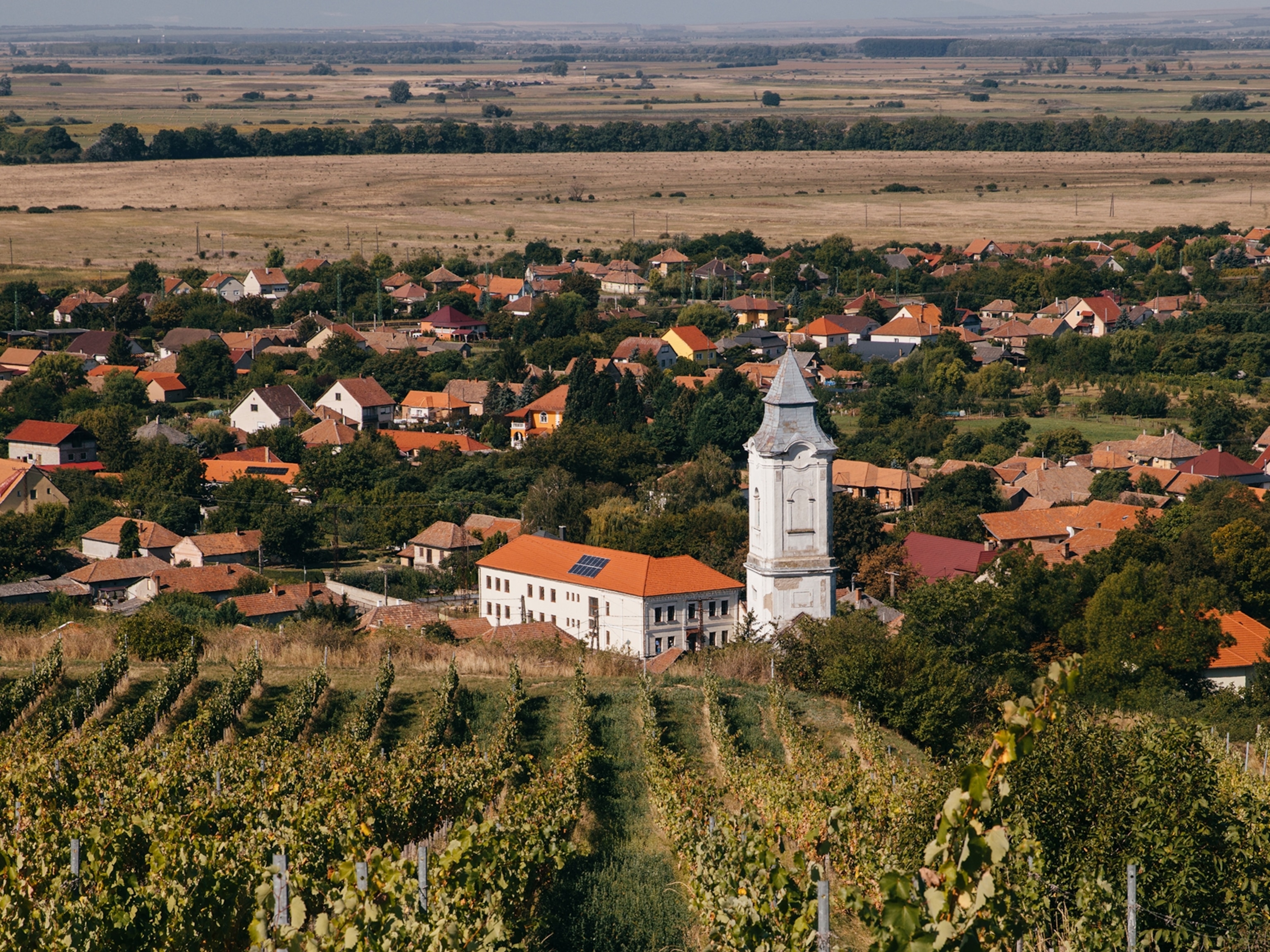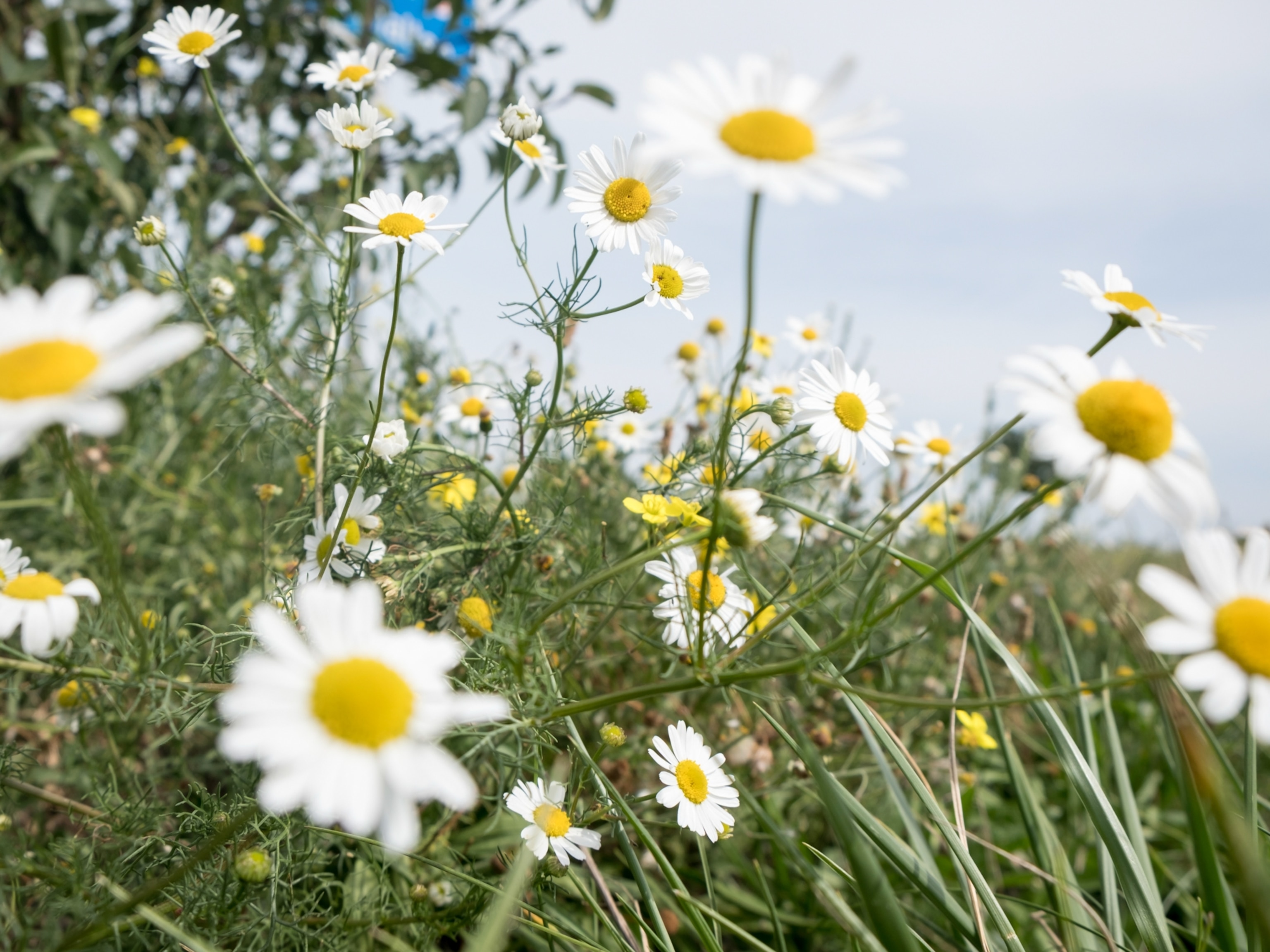
As Demand for Ginseng Soars, Poachers Threaten Its Survival
A handful of park rangers and conservationists are trying to protect the valuable and wild root from extinction.
Not long after the sun first peeks over the hills, the chill air still thick with fog, Jim Corbin sets up shop out of the back of his cherry red pickup. The North Carolina Department of Agriculture agent holds court in the back of a grocery store parking lot several times a week in the small Appalachian town of Sylva. Directions to the store are easy: “It’s the only one in town,” he says.
One at a time, old trucks, rusted-out white vans, and battered hatchbacks pull up. Corbin unfolds his nearly six-and-a-half-foot frame, topped with a Clemson baseball hat, and greets each person by name.
Many arrive in Sylva each September seeking Corbin’s signature on a form that legally allows them to sell a sought-after commodity hiding in the dirt: American ginseng.
The wild plant population has been in decline for years, but pressure from excessive harvesting and poaching to feed demand from Chinese medicine practitioners is causing numbers to plummet. Meanwhile, prices have surged above $1,000 per pound.
In 1975, American ginseng (Panax quinquefolius) was listed as a CITES Appendix II Species, which empowered the U.S. Fish and Wildlife Service to regulate its trade. But the popularity of recent reality TV shows like Appalachian Outlaws and Smoky Mountain Money may have only added to the appeal of poaching. Despite ever increasing penalties and limits on harvest periods, the potential profit from ginseng is simply too great to resist.
“My guess is that very little of the ginseng that’s harvested in the U.S. is done legally,” Corbin says.
And while a small number of locals has begun cultivating or conserving ginseng on private property—a practice that offers the best chance to keep the species viable, according to Jeanine Davis, a plant biologist at North Carolina State University—even they have to worry about poaching.
“Ginseng’s biggest enemy is humans,” Davis says.

The Telltale Mark of Poached Ginseng
The world has 11 species of ginseng, which have historically been used by various cultures for their medicinal properties. Ginseng is touted as a cure for everything from low energy to erectile dysfunction. The plant is so popular throughout China that many Asian species are now extinct or severely endangered.
The discovery of American ginseng in the 1700s by Jesuit priests provided a major financial boost for struggling colonists. Americans began trading their ginseng roots for Chinese tea. Daniel Boone made much of his fortune from ginseng.
Today, the tradition of harvesting wild ginseng, a process known as going “senging” or “sanging,” persists throughout much of Appalachia.
Maggie Bowers, who arrives looking for Corbin’s sign-off to resell ginseng she's purchased from diggers, dug ginseng herself as a young girl. “My daddy hunted ginseng, and so did my mama," she says in a raspy southern drawl. "Their parents did it too. It was filler money that paid the bills ... and bought Christmas presents for us kids."
Dressed in a pink-edged fleece camouflage jacket, a day-glo yellow tee with her business logo on the front (“Can U Dig It? Maggie’s Ginseng”), and a pair of running shorts, Bowers is visiting Corbin on her way to her other job running a cleaning service. Growing up, she says, many of her family members soaked ginseng roots in bottles of moonshine and took a teaspoon of the liquid every morning. “It’ll cure whatever ails you,” she laughs.
Before Corbin will sign off on Bowers’s 80 pounds of ginseng, he has to inspect her product. She pops the trunk of her black Toyota, revealing several large, clear plastic bags filled with the small, cream-colored root. Each root weighs just a few ounces and is about the size of a finger. Corbin shines a black-light flashlight over each bag, looking for a pop of the fluorescent orange powder used by rangers in nearby Great Smoky Mountains National Park to mark ginseng that should not be harvested. The appearance of orange markings indicates that the roots have been poached from government lands.
“I believe in doing the right thing, and I trust that my diggers do too,” Bowers says.
But her trust may be misplaced. Corbin finds a root with traces of orange—not enough to seize it, but enough to warrant a stern talking-to, one that he tells Bowers to pass along to her diggers. But Corbin isn’t holding his breath that this will change anything. He knows that many poachers manage to successfully evade the system. “Most of what’s harvested probably comes from this gray area,” he says.
According to plant population biologist James McGraw of West Virginia University, who has spent much of his career studying American ginseng, only about six percent of the ginseng harvested in this country complies with all laws about the age of the plant and when and where it was harvested.
Federal law prohibits ginseng harvesting in national parks and forests, but some of the largest and healthiest ginseng populations can be found throughout the 271,000 acres of Great Smoky Mountains National Park and nearby Pisgah National Forest. The area is too vast and too remote to prevent rampant poaching, so 20 years ago, Corbin, together with park rangers, developed the ginseng-root marking system to allow law enforcement officials to rapidly figure out whether roots have been taken illegally. The secret is a multicolored powder that has tiny GPS chips in it, so that officials can determine where the ginseng originated—a key piece of evidence for court cases. It also glows “like a lit cigarette” under a black light, according to Corbin.
Ginseng, of course, doesn’t mark itself. So for a week each August, shortly before the start of ginseng season, park rangers and volunteers fan out across the park armed with small vials of Corbin’s powder. Their goal is to hunt the elusive ginseng plant amid the park’s ample brush, sweep away the dirt from each root, gently rub a pinch of marking powder onto the root, and then re-cover it. Deputy ranger Joe Pond refers to the weeklong process as the Blitz.
“It’s an incredible sight to see all these people fanning out across the park," he says. "Many people actually look forward to it."
Budget cuts have eliminated nearly 40 percent of rangers from the park, even as ginseng poaching is on the rise. The result, Pond says, is that his team has to rely more on deterrence methods like root marking. “I think it’s really highly effective,” he says, although it’s hard to gather hard data on precisely how effective it is.
But the vastness of the park, combined with the rugged and remote terrain, mean that not every root can be marked. Many poachers grew up in these forests and have an intimate knowledge of the terrain that no amount of ranger training can match. They also tend to be remarkably hardy, traversing steep mountain passes with ease and enduring heat, humidity, and thunderstorms that would drive most others away. Add to that generations of grinding poverty, with the newer stress of the opiate epidemic making people ever more desperate for a quick buck.
Pond recalls accompanying local police to arrest a repeat poacher, only to find that he lived under a tarp propped up against the back of his parents’ dilapidated home. “Some can disappear into the woods and survive for days," he says.
Pond sees many parallels between his work fighting ginseng poaching and urban police trying to cut down on drug dealers. He relies on confidential informants to learn areas being targeted, sets up surveillance, and can ask for warrants for cell phone data. Pond has also begun using satellite images to try and figure out which parts of the park are most likely to be home to ginseng. Since patrolling every inch of the park is impossible, Pond uses his knowledge of poachers’ habits to increase the chances that he'll catch them.
Digging ginseng remains a predominantly male activity, and these men are often dropped off in the park by wives and girlfriends. Once done with the day’s work, they text their partners to be picked up. Cell phone coverage throughout the park is limited; so are easily accessible roads. The combination means that there are relatively few places for poachers to come out of the park with their loot. With a bit of stealth and good luck, one of Pond’s rangers and a local law enforcement official can be on hand to arrest the offender when they try to leave.
“About three-quarters of the time, when we catch people, they’re generally cooperative and will admit what they did. The other people can be more … ” Pond pauses for a second before finishing. “ … difficult.”
If caught and convicted, poachers can face fines and even jail time. Last fall, a repeat poacher was jailed for six months. He was released this spring, Pond says, and has already been seen several times in the park. “He’s poaching, I’m sure of it," he says. "We just need to catch him."
The ginseng roots confiscated by park rangers are quickly processed for evidence, and then replanted. Few survive, but it’s better than nothing. Pond admits that although treating poaching like the serious crime it is will help deter some people, the best chances for ginseng to survive will be if people actively start planting and cultivating it on their own lands. The idea, known as "conservation through cultivation," is one of the few ideas with the potential to give ginseng numbers a much needed boost.
A Poacher's Wildest Dream
Just off a narrow two-lane highway with a dizzying series of hairpin turns, Sara Jackson scouts the rugged forests on her property for signs of ginseng. Amid the verdant understory, one plant blends seamlessly into the next. Ferns, red cohosh, the flame-shaped jack-in-the-pulpit, and towering tulip poplars all frequently surround the sprouts of ginseng. She points to a patch where she and her partner, Martin, had replanted seeds over the years.
“This is a poacher’s wildest dream," she says. "They would salivate to see this."
Jackson patiently explains what can identify ginseng: clusters of pointed leaves that fade to a yellowish tone over the season, a bright pop of red berries. Or search out plants that are frequently found near ginseng, like stinging nettles and poison ivy.
“It’s almost as if the plant knows people are after it and it wants to protect itself,” Jackson says.
I stare at the patch for a few minutes, trying to imprint the look and feel of the ginseng plant. Jackson takes me a few yards farther up the path and asks me to pick out the ginseng plant in the patch. At first, I just stare blankly at the ocean of green in front of me. “That one?” I ask, pointing at a clump of bright red berries.
“Good guess, but that’s what we call fool’s ginseng," she says. "It’s the seeds from the jack-in-the-pulpit."
I give her a helpless look and she says not to worry. “I had a hard time finding them at first too.”
Jackson and Martin lead me over to a large fern sheltering a medium-size ginseng plant. Its four groups of leaves mark it as a four-pronged plant, some of the youngest plants that can be sustainably harvested, since they’ve had adequate time to produce seeds. Jackson estimates the plant is around eight to ten years old.
Unlike some diggers and poachers, who use shovels to dig up the roots as quickly as possible, Jackson uses her fingers and a small screwdriver to loosen the roots of other plants and dislodge rocks. Less than an inch beneath the leaf litter on the forest floor, Jackson reveals a pop of creamy white against the loose black soil. Working like an archaeologist unearthing priceless artefacts, she slowly pulls more dirt away from the root. Instead of the predominantly carrot-shaped roots that Corbin inspected, this particular root has three different lobes, each with long, hairy fibers trailing off the ends.
Pausing to wipe the sweat from her forehead, Jackson says that in traditional Chinese medicine, the shape of the root affects what it’s used for. A root that looks like a mother cradling a baby may be used as a fertility aid, whereas one that looks like a running man may be used for energy or virility. Better shapes bring more money, so she works with deliberate caution to avoid damaging the delicate root. After more than fifteen minutes, Jackson has finally excavated the last of the root.
Back inside her house, she says that although requiring ginseng harvesters to replant the seeds is a noble idea, it’s nowhere near enough.
“The few diggers that do actually bother replanting the seeds will leave them in the berries, where they can’t germinate, or just dump a handful in a hole in the ground,” Jackson says. “A few probably make it, but not nearly on the scale that’s being harvested.”
Ecological data bears this out. In a 1991 study in the Journal of Ecology, researchers found that only around one to 15 percent of seeds become seedlings, and, of those, only 8 to 31 percent survive to become mature plants. Those few that do survive are likely only being poached again. The pressure of poaching is also causing ginseng roots to be significantly smaller at maturity, according to data published in Biological Conservation.
A friend of Jackson’s and Martin’s had called the previous day, devastated that local teens driving an ATV had picked a ginseng patch that he and his family had visited for generations. In the space of an afternoon, hundreds of years of history were gone.
As far as she knows, Jackson says she hasn’t been the victim of poaching. Her ginseng is relatively close to the house, and she has two exuberant dogs guarding the property, along with a black cat named Dammit. But she knows her luck won’t hold. “I haven’t been poached yet," she says. "[But] I know it’s just a matter of time."
A major problem is that the market doesn’t seem to care if someone is selling illegally harvested ginseng. The growing environmental consciousness of many in China’s younger generation, however, shows promise. Just as some coffee and cacao growers have begun marketing themselves as Fair Trade, Jackson wants to create a market for ethically harvested ginseng. Little has seemed to change the behavior of poachers themselves, Jackson says, but if they can’t sell what they’ve stolen, then there won’t be a motivation for them to bother.
Whether a market exists remains to be seen, but both Corbin and Pond take a pessimistic view. “I do think the species will survive," Corbin says, "but only in small, very remote patches where it’s too hard to dig up."
Carrie Arnold is a freelance science writer living in Virginia. When she's not writing about cool critters, she's spending time outside, drinking coffee, or knitting. You can visit her at her website.

